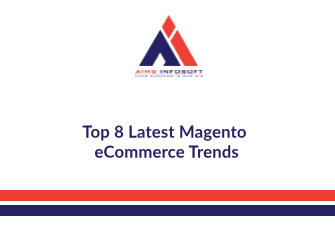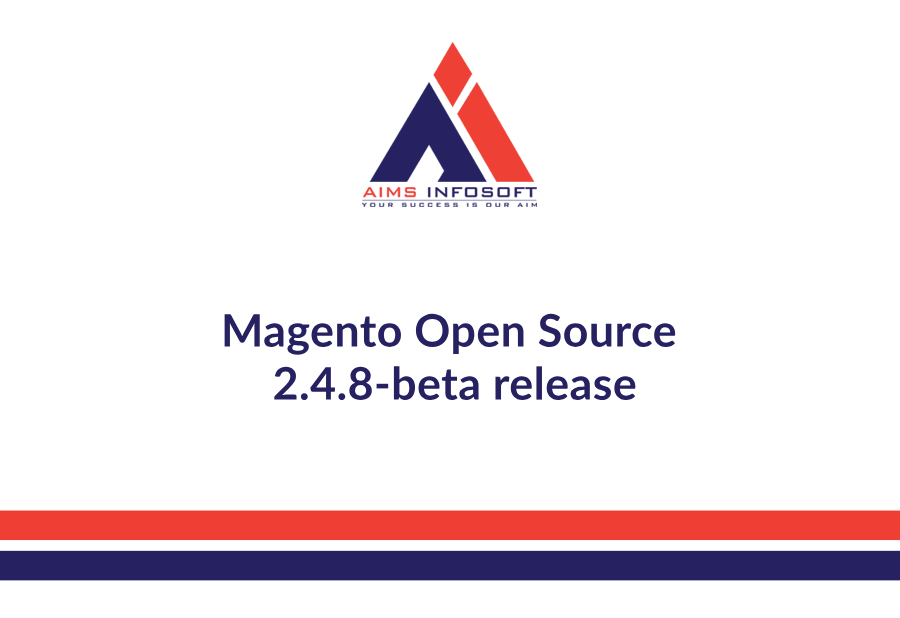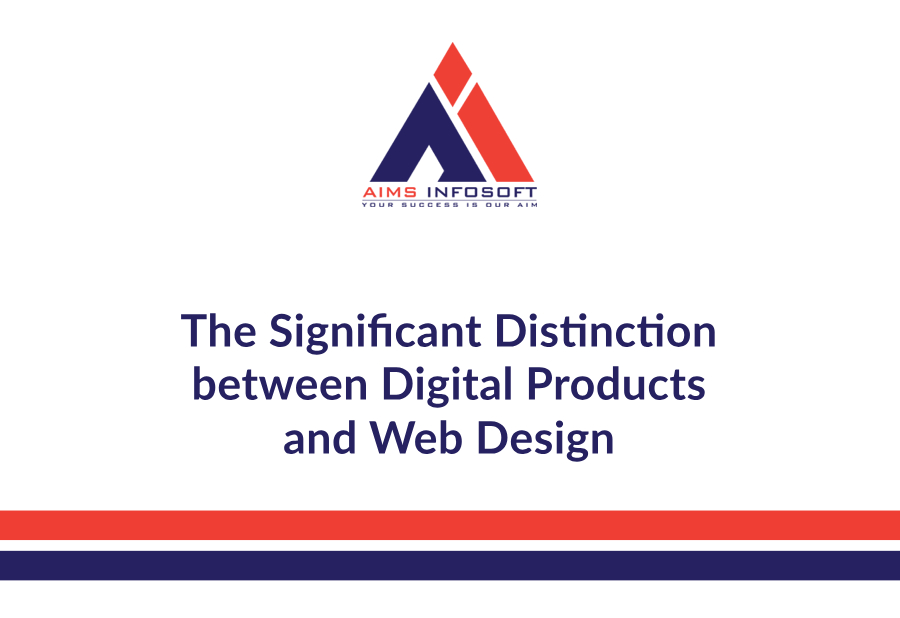Here are the Top 8 Latest Magento eCommerce Trends to help businesses stay ahead in the competitive digital marketplace:
1. AI-Powered Personalization
AI-powered personalization is revolutionizing eCommerce by delivering tailored shopping experiences that resonate with individual customer preferences. Here's a detailed overview of how this trend is impacting Magento stores:
What Is AI-Powered Personalization?
AI-powered personalization uses machine learning (ML), data analysis, and predictive algorithms to customize every interaction a customer has with your online store. From product recommendations to dynamic content, AI enables Magento stores to adapt to each shopper's unique behavior and preferences in real time.
Benefits of AI-Powered Personalization for Magento Stores
- Enhanced Customer Experience
- Show relevant products and offers based on browsing history, past purchases, and preferences.
- Provide a seamless, intuitive shopping journey.
- Increased Conversion Rates
- Personalized product recommendations can lead to higher click-through rates and purchases.
- AI-driven dynamic pricing offers competitive rates to customers most likely to convert.
- Improved Customer Retention
- Tailored loyalty programs and personalized emails strengthen customer relationships.
- Predictive analytics helps anticipate customer needs and proactively address them.
- Boosted Revenue
- Upselling and cross-selling strategies powered by AI increase average order value (AOV).
- AI analyzes patterns to identify the most profitable customer segments.
Key Features of AI-Powered Personalization in Magento
- Product Recommendations
- Use Magento’s AI tools to recommend products based on user behavior (e.g., “Customers who viewed this also viewed”).
- Dynamic Content Delivery
- Tailor homepage banners, emails, and product pages to match each visitor’s preferences.
- Behavioral Targeting
- Track how users interact with your store and adjust offerings dynamically (e.g., showing seasonal items to returning visitors).
- AI Chatbots
- Offer 24/7 customer support and guide users to relevant products or pages.
- Predictive Inventory Management
- Forecast demand based on customer preferences to ensure popular items are always in stock.
Examples of AI-Powered Personalization in Action
- Personalized Product Pages
- A returning customer sees a curated selection of items based on their previous purchases and browsing behavior.
- Custom Discounts
- AI identifies high-value customers and offers exclusive discounts to encourage repeat purchases.
- Smart Email Campaigns
- Emails suggest items the customer is likely to buy, timed perfectly based on their shopping habits.
- Voice and Visual Search
- AI integrates with Magento to recognize images or voice commands, making it easier for customers to find what they want.
How to Implement AI-Powered Personalization in Magento
- Leverage Magento Extensions
- Use Magento extensions like Adobe Sensei or third-party AI tools to enable advanced personalization.
- Integrate with Analytics Tools
- Combine AI with tools like Google Analytics or Magento BI for deeper customer insights.
- Utilize Customer Data
- Gather and analyze data from multiple sources: purchase history, location, device usage, and more.
- Test and Optimize
- Continuously test AI recommendations and adjust strategies based on performance metrics.
2. Headless Commerce
Headless commerce is a revolutionary approach to eCommerce that decouples the frontend (customer interface) from the backend (business logic and database). In Magento, this architecture allows for seamless integration, faster performance, and unmatched flexibility in delivering engaging shopping experiences.
What Is Headless Commerce?
In traditional eCommerce, the frontend and backend are tightly integrated. In headless commerce, the two are separated, allowing businesses to use APIs to connect the backend to any frontend, such as websites, mobile apps, or even IoT devices.
Magento’s robust backend capabilities make it an ideal platform for implementing headless commerce.
Benefits of Headless Commerce for Magento
- Unmatched Flexibility
- Design and develop custom user experiences without being restricted by the backend system.
- Easily adapt to new trends or requirements, such as Progressive Web Apps (PWAs) or mobile-first designs.
- Enhanced Performance
- Lightweight, decoupled frontends lead to faster load times.
- Scalability to handle high traffic and complex interactions.
- Omnichannel Integration
- Connect your Magento backend with various frontends, including voice assistants, mobile apps, social media platforms, and smart devices.
- Future-Proof Technology
- Quickly adapt to emerging technologies without overhauling the entire system.
- Easily integrate with third-party tools, such as AI-powered personalization or AR/VR for product previews.
- Improved Developer Experience
- Frontend and backend teams can work independently, speeding up development cycles.
- Use modern frontend technologies like React, Angular, or Vue.js.
Key Features of Magento Headless Commerce
- API-Driven Architecture
- Magento supports REST, GraphQL, and SOAP APIs to connect the backend with any frontend interface.
- Progressive Web Apps (PWAs)
- Magento PWA Studio enables businesses to create app-like web experiences, offering better engagement and performance.
- Seamless Content Management
- Use a headless CMS to manage and display content across various channels without being tied to the backend.
- Multichannel Retailing
- Sell across multiple touchpoints (e.g., websites, marketplaces, social apps) with a unified backend.
- Customizable Frontend
- Use any frontend technology to design user experiences tailored to your audience.
Use Cases for Headless Commerce
- Mobile-First Experiences
- Deliver fast, responsive mobile storefronts to cater to the growing number of mobile shoppers.
- Global eCommerce
- Create region-specific frontends while managing inventory and orders from a centralized Magento backend.
- Omnichannel Retail
- Integrate your Magento store with smart devices, kiosks, or even augmented reality (AR) tools.
- B2B Portals
- Build custom portals for bulk orders, account management, and personalized pricing.
Challenges of Headless Commerce
- Increased Development Effort
- Requires skilled developers to manage separate frontend and backend systems.
- Higher Initial Costs
- The flexibility of headless systems comes with an upfront investment in development and integration.
- Maintenance Complexity
- Coordinating updates across independent systems can be challenging.
How to Implement Headless Commerce with Magento
- Assess Your Needs
- Determine if headless commerce aligns with your business goals, such as omnichannel retailing or enhanced UX.
- Choose the Right Tools
- Utilize Magento PWA Studio, APIs, and modern frontend frameworks for implementation.
- Develop and Test
- Work with frontend and backend developers to build, test, and optimize your system.
- Monitor and Scale
- Continuously monitor performance and make adjustments to improve speed, usability, and scalability.
3 .Progressive Web Apps (PWAs)
Progressive Web Apps (PWAs) are reshaping the eCommerce landscape by combining the best of web and mobile app experiences. Magento, with its robust PWA Studio, enables merchants to build fast, reliable, and engaging storefronts that deliver superior performance across devices.
What Are PWAs?
PWAs are web applications that behave like native mobile apps. They are built using web technologies like HTML, CSS, and JavaScript but offer features traditionally associated with apps, such as offline functionality, push notifications, and home-screen installation.
In Magento, PWAs integrate seamlessly with the backend, offering an optimized shopping experience without the need for dedicated mobile apps.
Benefits of PWAs for Magento eCommerce
- Blazing Fast Speed
- PWAs load instantly, even on slow networks, reducing bounce rates and improving user retention.
- Offline Functionality
- Customers can browse products and access previously loaded pages without an active internet connection.
- Improved Mobile Experience
- PWAs provide a mobile-first design, ensuring excellent performance and usability on smartphones.
- App-Like Feel
- Features like push notifications, full-screen mode, and home-screen installation mimic the experience of a native app.
- Cost-Effectiveness
- Eliminates the need for separate mobile app development, saving time and money.
- SEO-Friendly
- Unlike native apps, PWAs are indexed by search engines, improving organic traffic.
Key Features of PWAs in Magento
- Magento PWA Studio
- A set of developer tools and libraries designed to build and deploy PWAs on Magento.
- Includes features for creating custom storefronts and integrating with Magento APIs.
- Push Notifications
- Engage users with personalized alerts about promotions, order updates, or abandoned carts.
- Add to Home Screen
- Users can save the PWA to their home screen for quick access, just like an app.
- Offline Browsing
- Service workers ensure that users can browse products and view cached pages even without internet connectivity.
- Responsive Design
- PWAs adapt seamlessly to different screen sizes, offering a consistent experience on mobile, tablet, and desktop.
How PWAs Enhance the Magento Experience
- Faster Checkout Process
- Reduced load times and intuitive design make the checkout experience smoother, reducing cart abandonment.
- Higher Conversion Rates
- By offering an engaging, app-like experience, PWAs encourage users to shop more frequently.
- Increased Engagement
- Push notifications and offline access keep customers connected to your store, even when they’re not actively shopping.
- Enhanced Security
- PWAs use HTTPS, ensuring secure data exchange and building trust with customers.
Examples of PWAs in Action
- Retailers
- Large-scale stores with diverse inventories benefit from faster load times and smoother navigation.
- Example: A fashion store’s PWA enables users to browse collections offline and receive push alerts for sales.
- B2B Businesses
- PWAs simplify complex buying processes by providing offline access to catalogs and order forms.
- Small and Medium Businesses
- PWAs offer cost-effective alternatives to native apps, enhancing their digital presence.
Challenges of Implementing PWAs
- Initial Development Costs
- While PWAs save money long-term, initial development requires skilled professionals.
- Compatibility Limitations
- Some legacy browsers may not fully support PWA functionalities.
- Learning Curve
- Developers must familiarize themselves with Magento PWA Studio and service worker configurations.
How to Implement PWAs for Your Magento Store
- Use Magento PWA Studio
- Leverage its ready-to-use tools and themes to streamline PWA development.
- Work with Experts
- Collaborate with developers experienced in Magento and PWA technologies to ensure a smooth implementation.
- Optimize for Performance
- Focus on caching, image optimization, and responsive design for a fast, seamless experience.
- Test Across Devices
- Ensure consistent functionality and appearance on all devices and browsers.
4. Voice Commerce Integration
Voice commerce is an emerging trend that enables customers to search, shop, and interact with online stores using voice commands. With the rise of smart assistants like Amazon Alexa, Google Assistant, and Apple Siri, integrating voice commerce into Magento eCommerce stores can help businesses tap into this growing market.
What Is Voice Commerce?
Voice commerce allows users to perform eCommerce actions—searching for products, placing orders, checking order statuses, and more—using voice commands. This functionality leverages natural language processing (NLP) and AI to interpret user input and respond accordingly.
Benefits of Voice Commerce Integration for Magento Stores
- Enhanced Customer Convenience
- Simplifies the shopping process by allowing users to shop hands-free.
- Perfect for multitasking customers or those using mobile devices.
- Faster Transactions
- Speeds up processes like product searches, reordering, and checkout, reducing friction in the customer journey.
- Broader Accessibility
- Makes shopping easier for visually impaired or differently-abled users.
- Higher Engagement
- Personalized voice interactions create a more engaging and interactive shopping experience.
- Staying Ahead of Competitors
- Voice commerce adoption positions your Magento store as an innovator in the eCommerce space.
Key Features of Voice Commerce in Magento
- Voice-Activated Search
- Customers can search for products using natural language queries.
- Example: “Find red sneakers in size 10.”
- Voice-Enabled Reordering
- Simplify repeat purchases with commands like, “Reorder my last purchase.”
- Smart Product Recommendations
- AI-powered systems suggest products based on previous voice interactions.
- Integration with Smart Assistants
- Connect your Magento store to Alexa, Google Assistant, or Siri to offer voice-based shopping.
- Order Tracking and Support
- Customers can check order statuses or seek assistance using voice commands.
How Voice Commerce Enhances the Magento Shopping Experience
- Streamlined User Journey
- Shoppers can go from browsing to checkout without typing or navigating complex menus.
- Improved Customer Insights
- Analyze voice queries to understand customer preferences and refine product offerings.
- Personalized Interactions
- Use customer data to deliver tailored responses and product suggestions.
- Support for Multilingual Shoppers
- Voice technology can accommodate diverse languages, expanding your global reach.
Challenges of Voice Commerce Integration
- Accuracy of Voice Recognition
- Ensuring the system correctly interprets accents, dialects, and background noise can be challenging.
- Privacy Concerns
- Customers may hesitate to use voice features due to concerns about data security.
- Complex Integration
- Developing and implementing voice capabilities requires expertise in AI, NLP, and Magento APIs.
- Limited Visual Interaction
- Voice commerce lacks the visual element of traditional eCommerce, which can be a disadvantage for certain product categories.
Steps to Integrate Voice Commerce in Magento
- Utilize Magento APIs
- Leverage Magento’s robust REST or GraphQL APIs to enable voice-activated features.
- Partner with Voice Technology Providers
- Collaborate with platforms like Google Dialogflow, Amazon Alexa Skills Kit, or Microsoft Bot Framework.
- Focus on NLP and AI
- Develop systems capable of understanding natural language queries and providing accurate responses.
- Test for User Experience
- Ensure voice interactions are intuitive, responsive, and error-free.
- Prioritize Security
- Encrypt voice data and adhere to privacy standards to protect customer information.
Examples of Voice Commerce in Action
- Voice Shopping
- A customer says, “Order a medium pepperoni pizza,” and the Magento store processes the request.
- Order Tracking
- “Where’s my last order?” triggers the system to retrieve and voice the shipping details.
- Product Information
- “What’s the best smartphone under $500?” provides a curated list of options.
- Reordering
- A command like “Buy my favorite shampoo” reorders a previously purchased product.
5. Enhanced Mobile Shopping
Mobile shopping has become a cornerstone of the eCommerce experience, with a significant portion of online transactions now occurring on smartphones. Magento empowers merchants to create seamless, engaging, and high-performing mobile shopping experiences that cater to the growing demands of mobile users.
What Is Enhanced Mobile Shopping?
Enhanced mobile shopping refers to optimizing every aspect of the eCommerce journey for mobile users. From responsive design and fast load times to app-like functionalities and personalized experiences, the goal is to deliver a user-friendly and conversion-focused shopping experience on mobile devices.
Benefits of Enhanced Mobile Shopping for Magento Stores
- Increased Sales
- A smooth mobile shopping experience leads to higher conversions and average order values.
- Improved User Engagement
- Mobile-optimized designs and functionalities keep users engaged and reduce bounce rates.
- Broader Reach
- Mobile-friendly stores appeal to a wider audience, including younger, mobile-first shoppers.
- Future-Proofing Your Store
- As mobile usage continues to grow, mobile optimization ensures long-term competitiveness.
- Better SEO Performance
- Search engines like Google prioritize mobile-friendly sites, improving your organic traffic.
Key Features of Enhanced Mobile Shopping in Magento
- Responsive Design
- Magento themes adapt seamlessly to different screen sizes, ensuring a consistent user experience across devices.
- Progressive Web Apps (PWAs)
- PWAs combine the functionality of mobile apps with the accessibility of the web, offering fast load times and offline browsing.
- Fast Page Load Times
- Magento supports advanced caching and optimized code to minimize loading times on mobile devices.
- Touch-Friendly Navigation
- Simplified menus, larger buttons, and swipe-friendly interfaces make mobile navigation intuitive.
- Mobile-Optimized Checkout
- One-page checkout, auto-filled forms, and mobile payment options like Apple Pay and Google Pay streamline the purchase process.
- Voice Search Integration
- Voice commerce capabilities let mobile users search for products hands-free.
- Personalized Mobile Experiences
- Use AI to offer tailored product recommendations and promotions based on mobile user behavior.
How to Enhance Mobile Shopping on Magento
- Leverage Magento PWA Studio
- Create app-like mobile experiences with fast performance and offline capabilities.
- Optimize Images and Videos
- Compress media files to reduce load times without compromising quality.
- Enable Mobile Payment Options
- Integrate payment gateways like PayPal, Stripe, Apple Pay, and Google Pay for quick and secure transactions.
- Implement Mobile-Specific Features
- Add features like geolocation-based offers, QR code scanning, and one-click checkout for mobile users.
- Focus on UX Design
- Ensure a clutter-free interface, easy navigation, and prominent call-to-action buttons.
- Test Across Devices
- Regularly test your Magento store on various mobile devices to identify and fix usability issues.
Trends Driving Enhanced Mobile Shopping
- Mobile-First Indexing
- Google now uses the mobile version of websites for indexing and ranking, making mobile optimization essential.
- Mobile Wallet Adoption
- The increasing use of digital wallets emphasizes the need for seamless mobile payment integration.
- AR/VR Shopping Experiences
- Augmented reality (AR) allows users to visualize products in their environment, enhancing mobile engagement.
- Social Commerce
- Mobile users can shop directly from social platforms like Instagram and Facebook, which can integrate with Magento.
- AI-Powered Chatbots
- Chatbots offer 24/7 assistance, helping mobile users find products, answer questions, and complete purchases.
Examples of Enhanced Mobile Shopping in Action
- Fashion Retail
- A Magento PWA for a fashion store enables users to browse and purchase offline, with AR tools to “try on” outfits virtually.
- Grocery Shopping
- A Magento-powered grocery store offers voice-assisted shopping, fast checkout, and location-based delivery options.
- Electronics eCommerce
- Mobile shoppers can compare products, read reviews, and complete purchases seamlessly on a responsive Magento storefront.
Challenges in Mobile Shopping Optimization
- Device Compatibility
- Ensuring consistent performance across a wide range of mobile devices can be challenging.
- Limited Screen Space
- Designing a user-friendly interface on smaller screens requires careful planning.
- Security Concerns
- Mobile shoppers are wary of data breaches, emphasizing the need for secure payment gateways and data protection.
6. Advanced Analytics and Reporting
In today’s competitive eCommerce landscape, data-driven decision-making is essential for success. Advanced analytics and reporting tools in Magento empower merchants to gain valuable insights into customer behavior, sales trends, and overall store performance, enabling them to make informed decisions to drive growth.
Why Advanced Analytics and Reporting Matter
- Improved Decision-Making
- Data-backed insights allow merchants to identify opportunities, address challenges, and optimize strategies effectively.
- Enhanced Customer Understanding
- Detailed reports on customer behavior help tailor marketing efforts, improve user experience, and increase customer retention.
- Increased Sales and ROI
- By identifying high-performing products, marketing channels, and customer segments, merchants can allocate resources more efficiently.
- Operational Efficiency
- Analytics highlight areas for improvement in inventory, fulfillment, and overall operations, reducing costs and inefficiencies.
Key Features of Magento’s Advanced Analytics and Reporting
- Comprehensive Dashboard
- A centralized view of key performance indicators (KPIs) such as sales, average order value, customer lifetime value, and more.
- Sales Reports
- Insights into revenue, order trends, and product performance over time.
- Customer Behavior Analytics
- Data on cart abandonment rates, browsing patterns, and purchase history to refine the customer journey.
- Marketing Campaign Analysis
- Metrics to measure the effectiveness of email campaigns, promotions, and other marketing efforts.
- Inventory Management Insights
- Track stock levels, identify fast- and slow-moving products, and predict demand trends.
- Customizable Reports
- Create tailored reports based on specific business needs, focusing on products, customers, or operational metrics.
- Integration with Google Analytics and BI Tools
- Seamlessly connect with external tools like Google Analytics, Power BI, and Tableau for deeper insights.
Benefits of Using Advanced Analytics in Magento
- Personalized Shopping Experiences
- Leverage customer data to deliver targeted product recommendations and promotions.
- Optimized Marketing Spend
- Identify the most effective channels and campaigns to maximize ROI.
- Reduced Cart Abandonment
- Understand why customers leave before completing a purchase and implement strategies to retain them.
- Accurate Demand Forecasting
- Predict trends and seasonality to optimize inventory levels and reduce overstocking or stockouts.
- Real-Time Monitoring
- Stay updated with live performance data to make proactive adjustments when needed.
How to Leverage Magento’s Advanced Analytics
- Set Clear Goals
- Define KPIs that align with your business objectives, such as revenue growth, customer acquisition, or inventory turnover.
- Utilize Magento Business Intelligence (BI)
- Take advantage of Magento’s integrated BI platform to access pre-built dashboards and customizable data visualizations.
- Segment Your Audience
- Use customer data to create specific segments for targeted campaigns and promotions.
- Analyze Sales Funnels
- Track customer journeys from landing pages to checkout to identify drop-off points and optimize conversion rates.
- Monitor Long-Term Trends
- Regularly review historical data to understand patterns and plan for future growth.
Examples of Advanced Analytics in Action
- Retailer A: Optimizing Marketing Campaigns
- By analyzing marketing data, a retailer identified email campaigns as the highest-performing channel, reallocating more resources there to boost ROI.
- Retailer B: Improving Inventory Management
- Inventory reports revealed slow-moving products, prompting the merchant to implement discounts and free up storage for better-performing items.
- Retailer C: Reducing Cart Abandonment
- Behavior analytics showed high abandonment rates on the payment page, leading to the introduction of additional payment options and increased conversions.
Challenges in Analytics and Reporting
- Data Overload
- Large volumes of data can be overwhelming; focus on key metrics that align with business goals.
- Accuracy of Data
- Ensure proper tracking setup and regular audits to maintain data reliability.
- Interpreting Insights
- Raw data needs contextual understanding; leverage experienced analysts or AI tools for meaningful interpretation.
The Future of Advanced Analytics in Magento
With the integration of AI and machine learning, Magento analytics is evolving to provide predictive insights and automate decision-making processes. This enables merchants to:
- Predict customer behavior and trends.
- Automate personalized recommendations and promotions.
- Identify risks and opportunities in real-time.
7. Subscription and Recurring Payments
The subscription economy is booming as customers increasingly prefer convenience and predictability in their purchases. Magento's robust features make it an ideal platform for businesses to implement subscription and
recurring payment models, catering to a variety of industries such as retail, health, SaaS, and media.
What Are Subscription and Recurring Payments?
Subscriptions involve customers signing up for periodic delivery of products or services, while recurring payments automate billing at regular intervals. Magento supports these models, providing flexibility and customization for both merchants and customers.
Benefits of Subscriptions and Recurring Payments for Magento Stores
- Predictable Revenue Streams
- Steady cash flow from recurring billing ensures business stability and better financial planning.
- Increased Customer Retention
- Subscriptions encourage long-term customer relationships, reducing churn rates.
- Improved Customer Convenience
- Automated payments and regular deliveries enhance customer satisfaction and loyalty.
- Higher Lifetime Value (LTV)
- Subscription customers often spend more over time compared to one-time purchasers.
- Streamlined Operations
- Automated order management and billing reduce manual efforts, saving time and resources.
Key Features of Subscription Models in Magento
- Flexible Subscription Plans
- Offer weekly, monthly, or annual subscriptions, or allow customers to customize billing intervals.
- Recurring Payment Gateways
- Integrate with popular payment processors like PayPal, Stripe, and Authorize.Net for automated billing.
- Customer Management Tools
- Allow customers to manage their subscriptions, update payment methods, and modify delivery schedules.
- Product Bundles and Discounts
- Encourage subscriptions with exclusive discounts or bundled product offers.
- Inventory Synchronization
- Magento ensures inventory levels are accurately updated for recurring orders.
- Trial and Freemium Options
- Enable free trials or low-cost introductory periods to attract new subscribers.
- Analytics and Reporting
- Track metrics like churn rates, average revenue per user (ARPU), and subscription growth trends.
How to Implement Subscriptions and Recurring Payments in Magento
- Choose a Subscription Extension
- Use Magento-compatible extensions like Amasty Subscriptions, Aheadworks Subscription Suite, or Magenest Recurring Payments.
- Set Up Payment Gateways
- Ensure your payment gateway supports recurring billing and aligns with your region's regulations.
- Design Subscription Plans
- Offer clear options with pricing, billing intervals, and benefits to cater to diverse customer needs.
- Optimize User Experience
- Create intuitive subscription sign-up processes with clear CTAs and minimal steps.
- Enable Customer Portals
- Provide a self-service portal where customers can view and manage their subscriptions easily.
- Monitor Performance
- Use Magento’s analytics tools to measure subscription metrics and make data-driven improvements.
Subscription Use Cases in Magento
- Retail Products
- Monthly delivery of essentials like groceries, cosmetics, or pet supplies.
- Health and Wellness
- Fitness plans, supplement subscriptions, or health monitoring services.
- Digital Services
- SaaS solutions, e-learning platforms, or streaming services with recurring billing.
- Luxury or Specialty Items
- Curated subscription boxes for niche markets like gourmet foods, wines, or fashion accessories.
- Maintenance Services
- Regular servicing, software updates, or maintenance plans for products.
Challenges in Subscription Management
- Billing Errors
- Ensure accurate processing to avoid failed transactions or duplicate charges.
- Churn Management
- Address reasons for cancellations with tailored retention strategies.
- Regulatory Compliance
- Adhere to global subscription regulations, such as offering easy cancellation options.
- Scalability
- Plan for increasing subscription volumes without compromising performance.
Best Practices for Subscription Success
- Transparent Pricing
- Clearly outline costs, billing cycles, and cancellation policies to build trust.
- Personalization
- Tailor subscription offers based on customer preferences and purchase history.
- Engaging Communication
- Use automated email campaigns to remind customers about upcoming renewals or offer exclusive perks.
- Incentives for Loyalty
- Reward long-term subscribers with discounts, free products, or exclusive content.
- Regular Feedback Collection
- Continuously improve by seeking customer input on subscription experiences.
Examples of Successful Subscription Models
- Coffee Subscription
- A Magento-powered store offers curated coffee blends delivered monthly with flexible size options.
- Pet Supplies
- Pet owners subscribe for recurring deliveries of food, toys, and grooming supplies.
- Digital Magazines
- Readers subscribe to access exclusive content and regular updates on their devices.
- Beauty Boxes
- Customers receive handpicked beauty products in monthly themed boxes.
8. Sustainability and Green Commerce
As consumers become more eco-conscious, businesses are adopting sustainability practices to meet growing expectations for environmentally responsible commerce. Magento provides robust tools and capabilities that enable eCommerce merchants to embrace green commerce and make their operations more sustainable.
What Is Green Commerce?
Green commerce refers to eco-friendly practices in eCommerce operations, such as reducing carbon footprints, minimizing waste, and offering sustainable products. It encompasses everything from sourcing materials to packaging, shipping, and energy-efficient website hosting.
Why Sustainability Matters in eCommerce
- Customer Preference
- 73% of global consumers are willing to change purchasing habits to reduce environmental impact.
- Brand Loyalty
- Businesses that prioritize sustainability often gain ber customer trust and long-term loyalty.
- Regulatory Compliance
- Adhering to environmental regulations avoids penalties and demonstrates responsibility.
- Cost Savings
- Sustainable practices like reducing energy consumption and minimizing waste can lower operational costs.
- Competitive Advantage
- A green approach differentiates your brand in a crowded market.
Key Strategies for Green Commerce Using Magento
- Sustainable Product Offerings
- Highlight eco-friendly products with labels or filters on your Magento store, such as "organic," "recyclable," or "carbon-neutral."
- Eco-Friendly Packaging
- Integrate options for minimalistic or biodegradable packaging during checkout.
- Energy-Efficient Hosting
- Use green web hosting providers that rely on renewable energy to power your Magento store.
- Carbon-Neutral Shipping
- Partner with logistics providers that offer carbon offset programs or implement local fulfillment centers to reduce emissions.
- Promote Recycling and Reuse
- Encourage customers to return used products for recycling or offer discounts for reusable packaging.
- Paperless Operations
- Use digital invoices and receipts to reduce paper usage.
- Green Certifications
- Display eco-certifications or badges on your store to assure customers of your commitment to sustainability.
Magento Features for Sustainability
- Product Information Management (PIM)
- Include sustainability details like eco-certifications and materials in product descriptions.
- AI-Driven Recommendations
- Suggest eco-friendly alternatives during customer browsing.
- Customizable Checkout Options
- Offer customers the choice to donate to green initiatives or opt for slower, eco-friendly shipping methods.
- Inventory Management
- Optimize inventory to minimize overproduction and reduce waste.
- Advanced Analytics
- Track and analyze the carbon footprint of operations to identify areas for improvement.
- Integration with Green Platforms
- Connect with apps or extensions that support sustainability, such as carbon calculators or green shipping tools.
Examples of Green Commerce in Action
- Apparel Retailer
- A Magento-powered clothing brand uses recycled fabrics, biodegradable packaging, and green web hosting.
- Food Delivery
- An organic food supplier implements carbon-neutral delivery options and encourages reusable containers.
- Electronics Store
- Offers refurbished products alongside new ones and provides e-waste recycling options.
- Home Goods
- Promotes eco-friendly furniture made from sustainable wood with a tree-planting initiative for every
purchase.
- Promotes eco-friendly furniture made from sustainable wood with a tree-planting initiative for every
Challenges in Implementing Green Commerce
- Higher Initial Costs
- Sustainable materials and processes can be more expensive upfront, requiring long-term commitment.
- Complex Supply Chains
- Ensuring eco-friendly practices across all suppliers can be challenging.
- Consumer Awareness
- Educating customers about the value of green commerce is crucial for adoption.
- Technological Limitations
- Limited availability of tools for tracking and optimizing environmental impact.
Trends Driving Green Commerce in Magento
- Circular Economy
- Businesses are focusing on reusing and recycling products to reduce waste.
- Carbon Footprint Tracking
- Customers increasingly expect transparency about the environmental impact of their purchases.
- Sustainable Subscription Models
- Eco-friendly subscription boxes are gaining popularity, offering refillable or reusable items.
- Blockchain for Transparency
- Blockchain technology ensures traceability of materials, proving sustainability claims.
Tips for Communicating Sustainability to Customers
- Be Transparent
- Share your sustainability efforts and goals openly on your website and marketing materials.
- Educate Your Audience
- Use blogs, videos, or infographics to explain the environmental benefits of your products and practices.
- Leverage Social Proof
- Highlight certifications, customer testimonials, and case studies to reinforce your commitment.
- Reward Green Choices
- Offer discounts or rewards for customers who choose eco-friendly options like slower shipping or minimal packaging.
Staying updated with these Magento eCommerce trends ensures that your online store remains competitive, user-friendly, and aligned with customer expectations. Whether it’s adopting AI for personalization, embracing PWAs, or focusing on sustainability, Magento’s versatile platform empowers businesses to innovate.













Leave a Reply